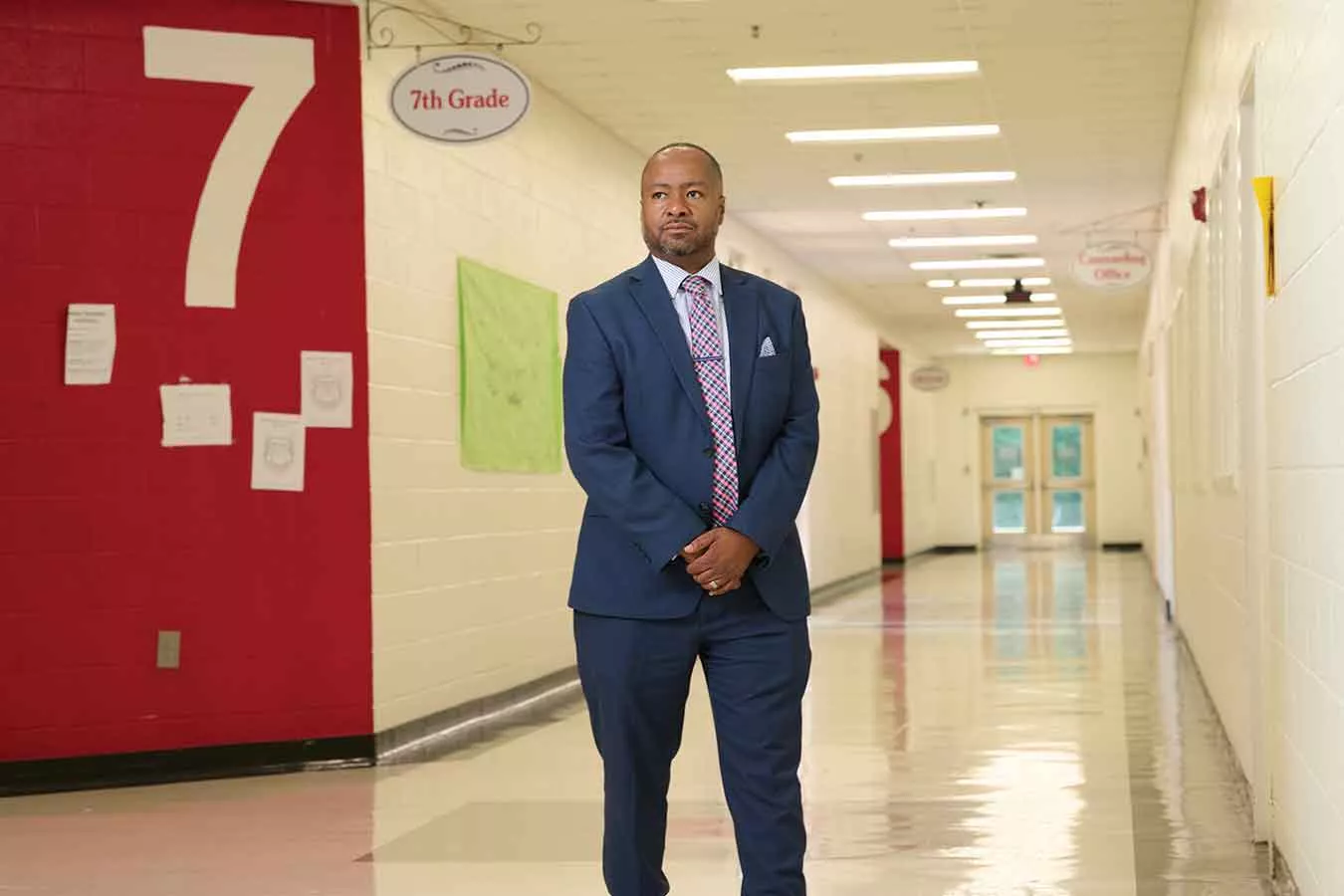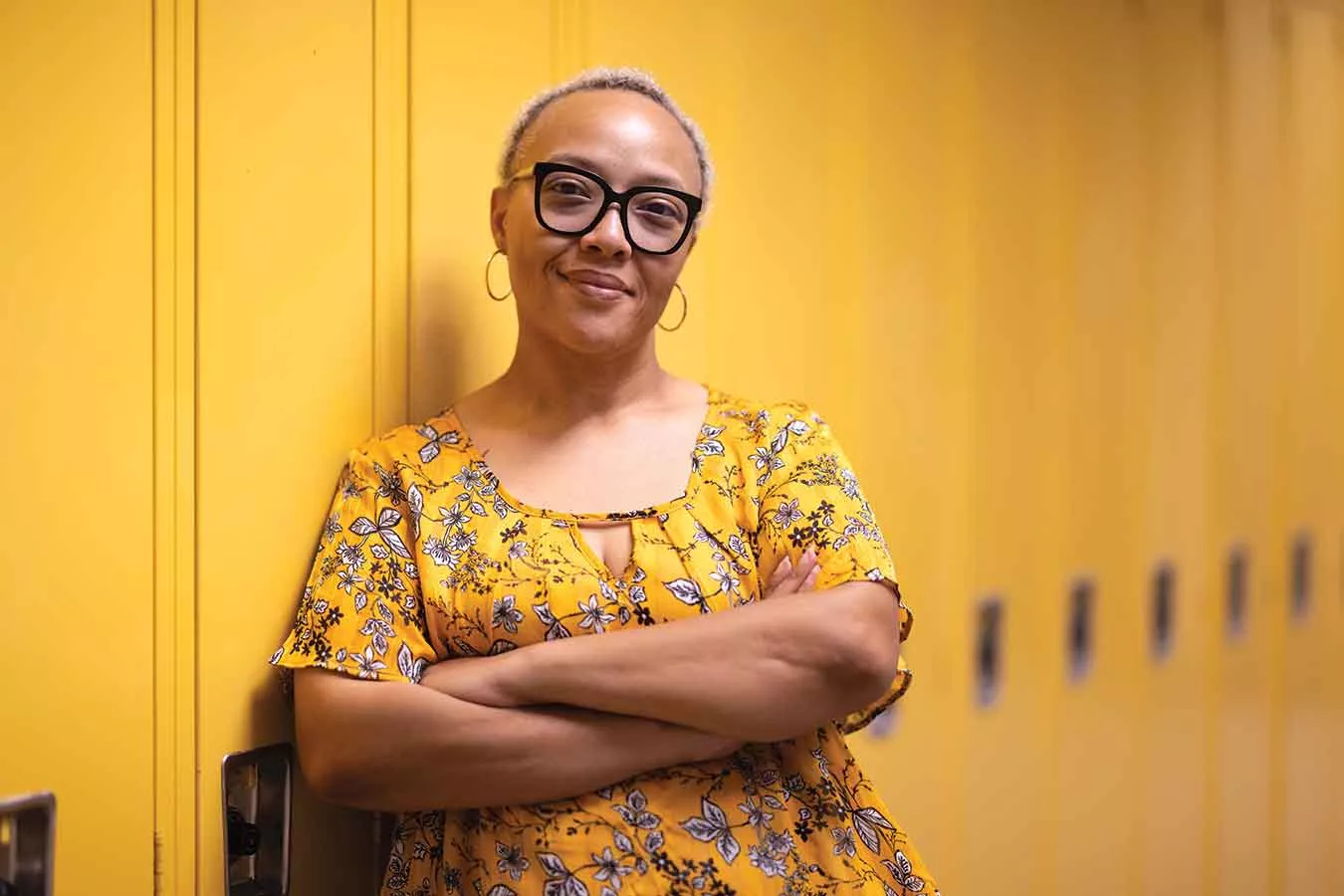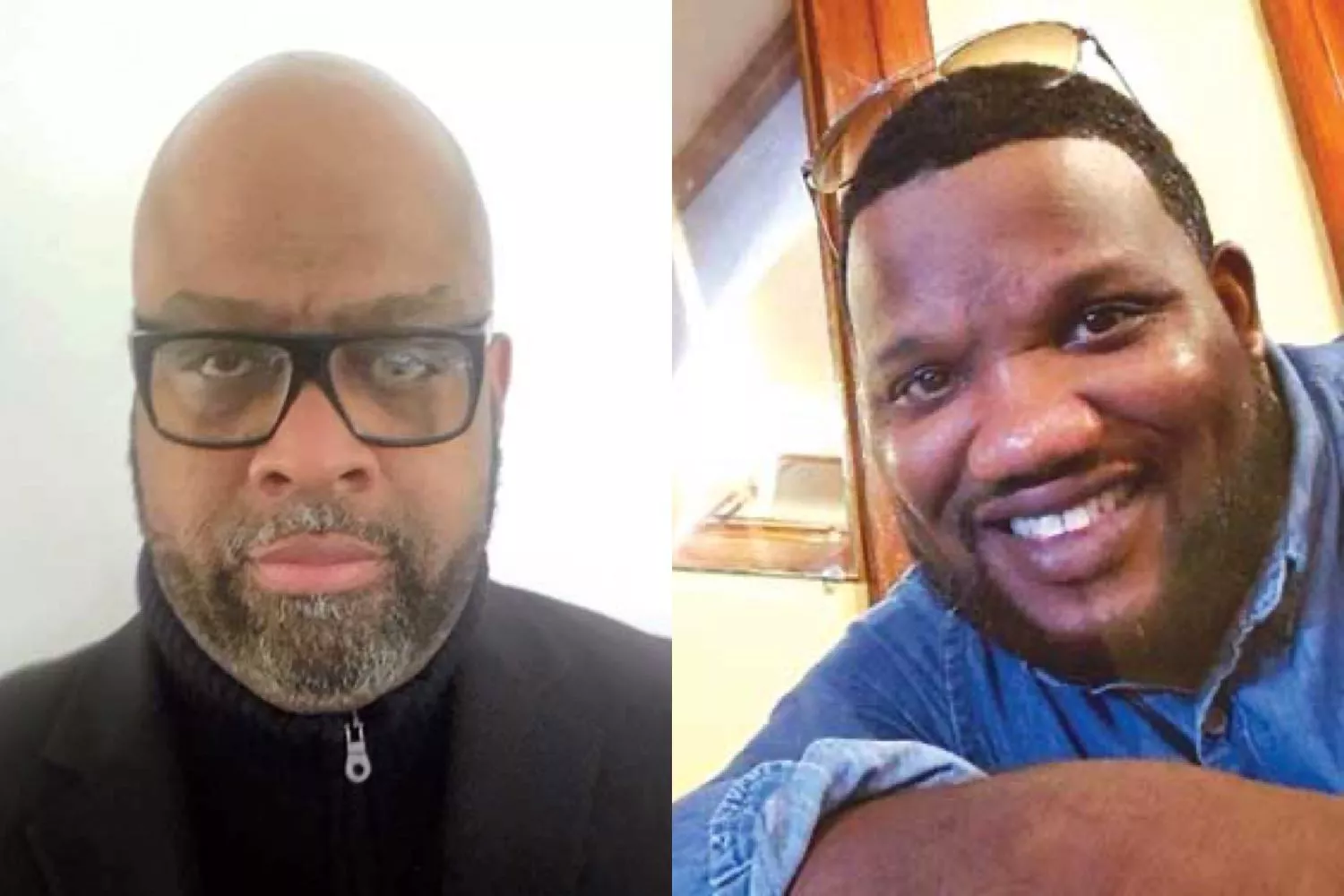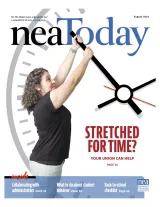Fabion Vicks, a middle school counselor in Hampton, Ga., is continually collecting data on students’ achievement, attendance, and behavior. He looks for gaps and problems and sets goals so students get the support they need.
Vicks shares that data with teachers, advisory councils, parents, and students themselves.
“Students are also stakeholders,” he says.
For example, his data showed that a lot of kids were gathering in unauthorized areas.
“They’d ask to go to the nurse and be gone for 30 minutes,” Vicks explains. He set a goal with teachers, support staff, and administrators to have an educator at the popular gathering spots at all times, reducing the problem behavior.
His work is grounded in data. “When does it occur—before or after lunch, on Mondays after a long weekend, before math or during reading? Behavior is going to kick up a notch when a student isn’t doing well on a standard,” Vicks says.
“We definitely need more counselors. We need to advocate for counselors, social workers, and security resource officers.”
Like most school counselors, Vicks also uses data to inform tailored classroom instruction, focusing on individual or group sessions to build skills that help overcome social and behavioral challenges.
He recommends that educators document what’s happening in their classrooms and share that information with a counselor, who can help create a program.
“We definitely need more counselors,” Vicks says. “We need to advocate for counselors, social workers, and security resource officers.”
The American School Counselors Association recommends a counselor to student ratio of 250 to 1, but the national average stood at 385 to 1 during the last school year. Vicks has one fellow counselor for 1,100 students.
NEA members made a difference!
When NEA members called for more support for mental health, the Biden administration responded with the Bipartisan Safer Communities Act (BSCA), signed into law in June 2022. The law provides $1 billion through grant programs to increase the number of school counselors, social workers, and psychologists in schools, and help train these professionals in providing the mental health services students need.
Find out more about these grants and share this link with colleagues and administrators: nea.org/mentalhealthgrants.
Learn More
NEA offers webinars, micro-credentials, and more resources for managing student behavior.






